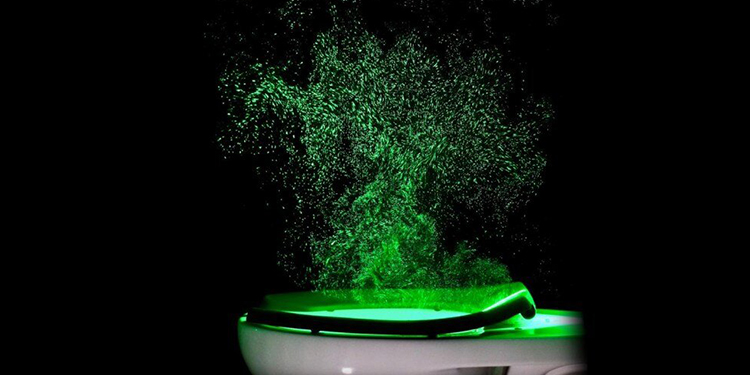An innovative audiovisual experiment using laser light has shed light on the invisible dangers that could be present every time a toilet is flushed without lowering the lid. Researchers have shown that particles released during toilet flushing can contain potentially harmful pathogens, according to a recent study published in Scientific Reports.
Using a special high-speed camera and intense green laser light, scientists simulated the process of flushing a lidless toilet in a public bathroom. The results were alarming: the microscopic droplets spread at an astonishing speed of 2 meters per second, reaching a height of 1.5 meters above the toilet in just 8 seconds. These particles, which could contain bacteria, viruses, and other fecal pathogens, remain in the air for a considerable time.
John Crimaldi, lead author of the study, emphasized the importance of these findings: “If there is something you can’t see, it’s easy to pretend it doesn’t exist. But once you watch these videos, you’ll never think about flushing a toilet in the same way again.”
Experts warn that the pathogens present in these particles could include norovirus, adenovirus, and bacteria such as E. coli or C. difficile, which can cause various diseases. This visually striking study aims to raise public awareness of the health risks associated with not lowering the lid when flushing the toilet.
“By providing striking visual images of this process, our study can play an important role in public health messaging,” Crimaldi said. The research sheds light on the hidden dangers in our daily habits, reminding us of the importance of hygiene in our public and private environments.










